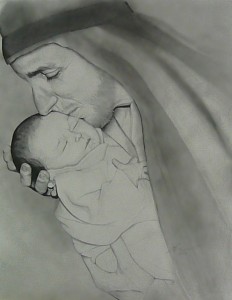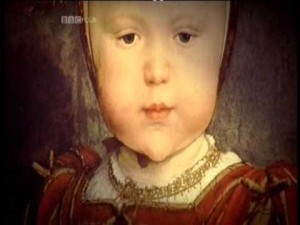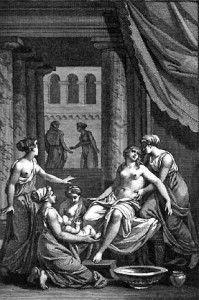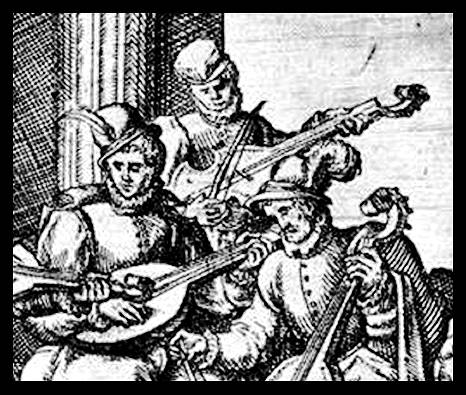John de Vere’s firstborn son
 For most of us who have any interest in the topic, that would be Edward, the only son ever recorded or claimed by the 16th earl of Oxford as his own. I like to imagine that the boy’s arrival would have pleased his father. Both the 13th and 14th earls of Oxford had failed to produce heirs, and his twelve years of marriage to Dorothy Neville had given him two daughters (one who survived, Katherine, and Faith, who died in infancy) but no son. Given the circumstances of predation and instability that all of England, but Earl John in particular, had endured since the passing of Great Harry in January of 1547, a male heir to his ancient family name must have given him great comfort.
For most of us who have any interest in the topic, that would be Edward, the only son ever recorded or claimed by the 16th earl of Oxford as his own. I like to imagine that the boy’s arrival would have pleased his father. Both the 13th and 14th earls of Oxford had failed to produce heirs, and his twelve years of marriage to Dorothy Neville had given him two daughters (one who survived, Katherine, and Faith, who died in infancy) but no son. Given the circumstances of predation and instability that all of England, but Earl John in particular, had endured since the passing of Great Harry in January of 1547, a male heir to his ancient family name must have given him great comfort.
And when did the happy father first welcome his baby boy and claim him as his own? On the face of it, Alan H. Nelson’s discovery of a Privy Council document, dated 17 April, 1550, authorizing a gift “at the Christening of our very goode Lorde the Erle of Oxfordes Sonne“, leaves little room to doubt the traditionally accepted date of birth, first recorded in William Cecil’s retrospective table of important family dates as “1550 April 12, Edw. Co. Oxon Natus“.
As it happens, the 17th of April, 1550 was quite a busy day for the Privy Council, with the record of transactions beginning on page 430 of the online edition of the Register, and continuing through page 431 (Acts of the Privy Council of England, 1547-1550, Vol. 2, available at British History Online). From the wording of the warrant, it appears that the christening had not yet occurred, and that the earl of Oxford’s son did not yet have a name; if he had one, surely someone would have thought to include it. The name “Edward” had never been used for the de Vere earls; no doubt Earl John wished to honor his young monarch. But he may also have wished to appease the king’s uncle, Edward Seymour, duke of Somerset and Lord Protector of the Realm, who had so voraciously pursued a personal interest in the de Vere family’s estates. By early April of 1550, Somerset seemed to be on the verge of regaining his former power; on 10 April, he had been reinstated to the Privy Council.
 Most commentators on Edward de Vere’s birth have found the christening cup warrant to be sufficient proof that he was, indeed, the legitimate son of John de Vere and Margery Golding . (See, for example, Robert Brazil on Oxford’s nativity, the first eleven pages of Christopher Paul’s article on Prince Tudor theory, Part II, and Nina Green’s opening account of The Fall of the House of Oxford) A small but eloquent minority, however, continue to suspect that this document is somehow compromised, and that the true story of Edward de Vere’s birth may have been willfully obscured.
Most commentators on Edward de Vere’s birth have found the christening cup warrant to be sufficient proof that he was, indeed, the legitimate son of John de Vere and Margery Golding . (See, for example, Robert Brazil on Oxford’s nativity, the first eleven pages of Christopher Paul’s article on Prince Tudor theory, Part II, and Nina Green’s opening account of The Fall of the House of Oxford) A small but eloquent minority, however, continue to suspect that this document is somehow compromised, and that the true story of Edward de Vere’s birth may have been willfully obscured.
As comforting as it might be to let well-enough alone, we actually have good reason to believe that things are not quite as they seem. The first person to go on record with their doubts was a first-hand witness to Earl John’s affairs: Edward’s half-sister Katherine Vere, Lady Windsor. Perhaps out of respect for her father’s peace of mind, she said nothing until after his death in August 3, 1562. But less than a year later, her husband filed a suit that seems to have touched the young earl of Oxford’s “legitimacy of the blood“, along with that of his sister, Mary. The sole surviving document ( here in Latin, and here as translated in Nelson’s Monstrous Adversary) mentions “certain articles” but provides no clue as to the basis for Katherine’s attempt to nullify her father’s claim that Edward was, indeed, his true heir.
For that, we must turn to the disturbing testimony of five witnesses who were called on forty years after the events in question to recount all that they remembered of Earl John’s adulteries, reckless courtships, and his bigamous marriage to “Joan Jockey”, prior to his hasty agreement to wed Margery Golding. Curiously, not one of these five men betrayed the least suspicion that the earl’s passionate affairs might have resulted in the birth of a bastard child. This is mildly surprising. In spite of all his mistresses and “pretended” marriages, Katherine, Faith, Edward and Mary were and remain John de Vere’s only children on record. No spurious Edmund, it seems, ever dogged the heels of the earldom’s true Edgar.
 And yet, Edward’s legitimacy problems began long before Katherine contested his rights in 1563, and were of such force that he remained vulnerable even after his father’s seemingly lawful marriage to Margery Golding in 1548. From his first breath, Edward would have been surrounded by family who had lived through all the events described in 1585. Some of his closest kin assuredly knew all that had happened to the village girl Joan – after all, his uncles Thomas Darcy and Edmund Sheffield were two of the five men who had “cut” and “spoiled” her.
And yet, Edward’s legitimacy problems began long before Katherine contested his rights in 1563, and were of such force that he remained vulnerable even after his father’s seemingly lawful marriage to Margery Golding in 1548. From his first breath, Edward would have been surrounded by family who had lived through all the events described in 1585. Some of his closest kin assuredly knew all that had happened to the village girl Joan – after all, his uncles Thomas Darcy and Edmund Sheffield were two of the five men who had “cut” and “spoiled” her.
Have you ever wondered why Sir John Popham’s twenty questions to the deponents of 1585, in a case that threatened the 17th earl of Oxford’s right to his name and lineal inheritance, did not include, “To the best of your knowledge, was there issue from any of these previous extra-marital liasions?” Given that the queen herself had called Oxford a bastard, we might wonder if Popham had consulted her before drafting his questions. If something truly damaging to the de Vere inheritance of Burghley’s granddaughters lurked in the testimony of these five men, would she have wanted it brought to light? What if one of the men testified that Earl John had married Joan because she was pregnant with his child?
Among these darkest of memories, we find no easy explanation for Earl John’s touchingly erratic and increasingly frantic determination to marry someone, anyone. What was his problem? After Dorothy’s death in January, 1548, he was free at last to contract another true marriage. Maybe what he needed, urgently, was a new wife who would silently adopt and legitimize a baby son born to the shamed and mutilated woman he’d already married at Whit Colne Church.


Excellent research Marie! It only proves there’s still so much we don’t know about the Earl. He was mysterious even in his birth.
Nice to hear from you, Blair! Remember the comment on FB a week or so ago about Shakespeare’s thing about twins? That mystery surrounding John de Vere’s odd marriages may have inspired in Edward an early identification with the myth about the birth of Hercules.
@William Ray
William Ray: Thanks for the Richard III quote! I will get to Thomas Seymour and Princess Elizabeth, and the rumors of her teenage pregnancy, eventually. For now, my focus is on the documentary evidence in Oxford’s life. I want to be clear about what the records concerning his birth and legitimacy really tell us, beginning with the 1585 depositions. It may be that the answer to what Seymour “had” over the earl, to use as blackmail, is so obvious we just don’t see it.
I don’t know what the truth is about Oxford’s legitimacy, or his parents. But maybe this review will turn up critical information and historical context that we’ve all overlooked.
“Wolfish earl” – hmmm….did anyone ever use such a term about John de Vere? I’m not sure the term fits him – but that’s part of what I’m trying to uncover. Just who was he? What would Edward have remembered, long into his adult years, about the father that he lost in the summer of 1562?
Bravo, Marie!
This journal is marvelous and much needed, since it’s hard to find a truly objective source of information. I also love the way you write!
I’ve been wondering about this “birther” question for a long time. Thanks for the thought-provoking suggestion that a “bastard” son born to Joan could have been the 17th Earl of Oxford. Have you uncovered any information about the idea that Somerset had been blackmailing John De Vere (reasons unknown so far as I know)? I have read that Katherine’s suit was based on the charge that the 16th Earl was committed to marry Joan (banns published and all that) so his marriage to Marjorie Golding would have been bigamous. She dropped the suit, but Queen Elizabeth playfully called Edward a “bastard” because of it. She, too, had been accused of being a bastard, so I don’t think she was being intentionally insulting.
Consider me a devoted fan from now on.
Helen Gordon
Thank you for these kind words, Helen. Did I really suggest that the child Joan may have been carrying was our Edward? I guess that’s what I’ve suspected for a long time, even though the dates never quite allow for it. But chances are that she was pregnant somewhere along the line, either when Earl John decided to marry her, (rather than “keep” her, as he did Anne of Tilbury Hall), or when Darcy and Sheffield enlisted three men to attack her. What would make Joan the village girl so dangerous that all this malicious energy was required to “rid” the earl of her presence in his life? A baby in her womb.
That would make sense of why it was so important to destroy this clandestine marriage before Lady Dorothy died, before Joan could give birth to a questionable heir to the de Vere earldom. As William pointed out, Henry VIII set the example; once Catherine of Aragon died, Anne Boleyn’s days were numbered. The king was now free to make a legally binding marriage with Jane Seymour that no one could question. Same thing for Earl John; once he was free to marry again, however, Lord Darcy, and his cousin, Lord Protector Somerset, had their own plans for his next alliance.
As for the “blackmailing”, no, I haven’t uncovered just what it was that Somerset “had” over Earl John. Katherine’s suit probably had to do with her father’s pre-contract to marry her governess, Dorothy ffosser (or Fosser; Foster), not Joan. See the 1585 Depositions Concerning Oxford’s Legitmacy
Was Elizabeth being playful, rather than insulting? It may be comforting to imagine it that way, but all we can know for sure is what Arundel reported that Oxford said. We don’t know that the queen called him a bastard because of Katherine’s suit – that’s an assumption. Maybe she had known all about Earl John’s affairs from way back in 1546-48, when Dorothy first left him. Reminding this headstrong subject of his uncertain birth may have been her way of keeping the 17th earl of Oxford firmly in line.
If we are speculating on a psychological plane, then a possible focus is the connection between Seymour’s black-mail and Vere’s need for an heir. Seymour had the heir. Vere had the land. Just a great bunch of guys buying horses. But John Vere was now the witness to be removed. Seymour was psychopath enough for the deed, while the “wolfish earl” Vere nevertheless seemed to impart love and loyalty to his young charge, if subsequent Vere name and Oxford title cues in the works mean anything. When he was gone, someone in the clan, probably Arthur Golding, refused to emotionally abandon the child. In my opinion, this was the basis for the future line in Richard III: ‘When my uncle told me [my father had died] he wept/ And hugged me to his arm and bade me rely on him as on my father/ And said he would love me as his own child.’ As far as Joan Jockey, they probably handled their difficult women differently from the courtly types in London did. Instead of a scapegoat execution, e.g., Henry VIII, they chopped her up Lavinia-style and let it go at that. From then on she had no credibility because no status. Anyone who grew up in humiliation amidst this beastly background might be looking for some revenge. Best wishes, William Ray
This is wonderfully researched and written, Marie, and you’ve caught me as one of your devoted readers. The subject at hand is the stuff of genuine mystery; your handling of the various pearls of evidence is simultaneously wise and fun and might actually lead to some of the buried truths. There is, after all, an answer to each question, if only we might be able to know it. Thanks and keep up the great work.
Thanks so much for these kind words, Hank, and the promise of your company along the way. I really appreciate that you’re open to seeing these events in a new light. We may never come up with a verifiable truth about Oxford’s “legitimacy of the blood”, but I do think we can get closer to the psychological truth of what effect his father’s strange marriages must have had on him.
Could your readers have some information about the beautiful graphic images that illustrate your essays, such as the name of the painting, the artist, and who is depicted?
If you roll your cursor over the images, you’ll find the artist and subject, and, on the amazing “father and son” drawing by Ria Spencer, her website as well. Most of the images I’ve used have some “roll-over” comment, but I’ll include these specifics for images on future posts. Thanks for the feedback, Linda.